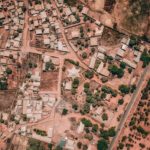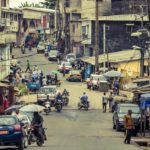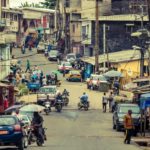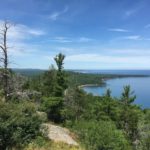Hiking Mount Cameroon: Everything You Need to Know
A few friends and I were discussing our recent treks up Mount Cameroon, recalling the best memories and most miserable lows of the three or four day hike (starting from a city called Buea). All in all, we agreed it had been a high point of our two years here in Cameroon.
“But it’s so expensive,” said one friend, who was debating whether or not to cough up the francs for the journey. Money comes up often in the Peace Corps because we get paid enough to live comfortably and have some luxuries not available to most Cameroonians but nowhere near enough to live it up like most other expats. Said friend had a hot water heater installed in her house at no small expense. The girl’s got priorities.
Another friend, so fresh off her Mount Cameroon hike that her cheeks still shone with sunburn and her feet ached with blisters, began to shake her head. “It’s not optional,” she said. “If you’re here, you have to do it.”
That’s certainly the attitude of many Peace Corps Cameroon Volunteers. The trek isn’t cheap—depending on the guides you go with and the amount of days you go for, it can cost between 75,000 FCFA ($150) and 400,000 FCFA ($800) to summit—and Peace Corps Volunteers aren’t, generally speaking, rich, but we shell out the big bucks because it’s worth it.
“It’s not optional,” she said. “If you’re here, you have to do it.”
Beside the expense, there’s the physical exertion. Mount Cameroon is the tallest mountain in West Africa, standing at 4,070 meters. The first girl from my Peace Corps training class to climb it is a Registered Nurse who had a few marathons under her belt stateside. When asked if she was planning to run the mountain during the annual Race of Hope (an annual Guinness-sponsored race up and down the mountain, 38 kilometers in all), she laughed. “Walking Mount Cameroon is already like a marathon. I don’t need to run up and down it too.” (For the record, she and two other girls from my training class ended up kicking butt running the three-person relay at Race of Hope this past February).
Other friends have deemed the hike “the hardest thing I’ve ever done” and claimed to be sore weeks after summiting. It’s challenging for sure, but I found it to be the variety of workout that makes you feel strong and accomplished throughout. And the amazing variety of ecosystems and terrain ensures that you’ll never be bored—and will always have something to focus on that isn’t the pain in your knees.
Hiking Mount Cameroon: Everything You Need to Know
The most popular route is the three-day trek, but we opted to add a fourth for a day in the “elephant forest” (the intensity and amount covered each day for the first two days is the same). I wouldn’t recommend the four-day hike—it’s more expensive and the extra day doesn’t dazzle like the first two do. Below, I break it down.
Itinerary for a 4 Day Hike:
Day 1
Three hours to Hut One, one-and-a-half hours to Intermediate Hut, one-and-a-half more hours to Hut Two, camp at dilapidated Hut Two.
Day 2
Three hours to Hut Three, forty-five minutes to summit, twenty minutes at summit (we were lucky to have clear skies and beautiful views on the summit), several more hours down, camp at a beautiful site among the volcano ash.
Day 3
Out of the volcano ash and into the “elephant forest,” where the chances of seeing elephants are a paltry ten percent. We saw some footprints. Morale was low on this day, because we saw no elephants, had to remain silent, and the slope and scenery didn’t change very often so it got dull.
Day 4
Two hours through the bamboo forest to Limbe Beach! Beers with the porters and a day on the beach.
Trip Essentials:
Highs
The view from Hut Two, delicious white beans the first night, cute porters, avocados with lunch the first day, volcanic ash dunes.
Lows
Staying silent all of day three while searching for elephants, the blister between my big toe and the one next to it, having to leave two sick friends behind, running out of Mambo chocolate bars, the latrine at the camp on the second night.
The team
Aly and Elijah, Peace Corps Volunteers in the Youth Development and Health sectors, respectively, and Gretchen, a Fulbright scholar (and fellow Pink Pangea correspondent!) here for nine months studying beekeeping practices. Initially, two other friends – another Health Volunteer and a visiting college friend who works for a development NGO in Toronto – were going to join, but both got seriously ill the morning we took off and ended up staying in Buea to recuperate.
The guides
We used HADY Guides, run by Walters Chin. I’d highly recommend HADY. They provide meals, water, tents, and sleeping bags, plus the guides, cooks, and porters. Cost: 280,000 FCFA ($560) for three days, 350,000 FCFA ($700) for four days (less with Peace Corps discount). There are other guide companies with good reputations, but I have been cautioned against using any Ministry of Tourism guides; they tend to be less expensive but cut costs in places you might not want, like by skimping on water and food.
When to Go
We went in January and were lucky to have no rain and minimal wind; any earlier and you risk both. Skies stay clear until about May or June; prices are discounted during the rainy season and HADY does not generally lead hikes in August.
Group Size
Four felt ideal, but I think up to eight would work well. They should be people you’ll have a lot to talk about with, and people with similar fitness levels.
What to Bring
A camping backpack and a daypack (the porter will take your big pack and you’ll hike with your small one), a water bottle, headlamp, toilet paper, warm clothes (long pants, hats, a raincoat/windbreaker), good sneakers or well-worn hiking boots, wet wipes, hand sanitizer, and an assortment of Cameroonian fuel in the form of Parle G cookies, Vache Qui RIt (Laughing Cow) “cheese,” and Mambo chocolate. Care package Crystal Light is also great.









Climbed it in 1965 with fellow PCV Jim Waters from NY. PC service in Niger. Simon, who was polydactylic, was our guide. Grueling trek. Had a cool bottle of milk from prison farm located along the way. A memorable trek.
Wow had the moment of my life up the highest peak in West Africa.I think we from the western world really need to carry out such trips often.Together with a group of three friends we used Trek Mount Cameroon guiding services (www.trekmountcameroon.com) and their level of professionalism was second to non,i ill recommend them.
Thank You Cameroon and see you soon.
Hello there Anna,
I’ve been reading through your posts and everything you talk about is perfectly described as I recall it. I’m from Panama and grew up in Cameroon (lived 10 years) mostly at Limbe and Buea. I’ve been up the mountain about 4 or 5 times however I’m unaware of the “Elephant forest. I’ve heard of a route the closely follows the lava and ends right near seme beach however I’ve never hiked it. You’ve sparked the need to visit my country again, lots of friends and memories I left 6 years ago. Thanks!